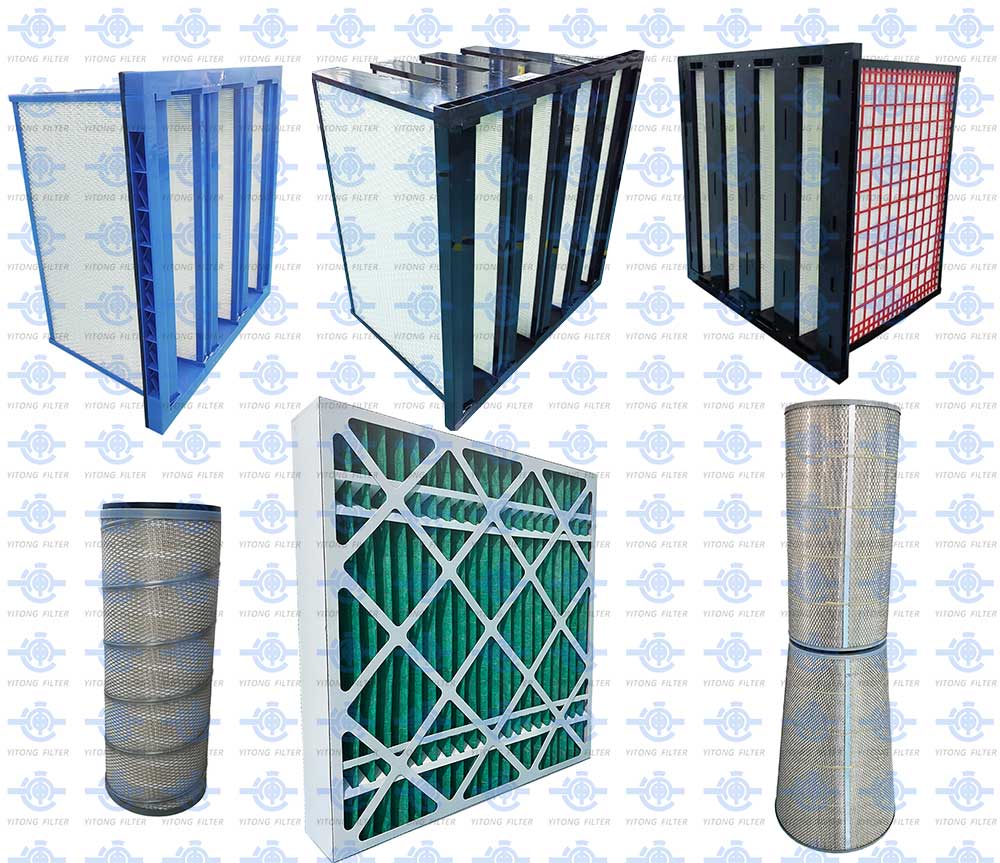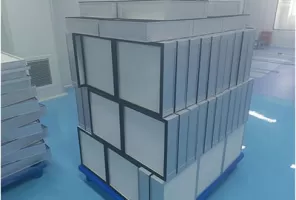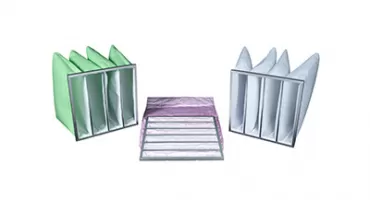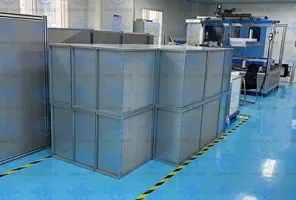 October 28, 2024
October 28, 2024
Gas turbines are critical components used in power generation, oil and gas, and aviation industries. To operate efficiently, they require clean air, free from dust, moisture, and contaminants. This is where gas turbine inlet air filters come into play. These filters ensure the engine remains efficient, reduces maintenance costs, and extends the turbine’s lifecycle.
In this article, we’ll explain the types of air filters used in gas turbines, the importance of filtration, and how to choose the right inlet filtration system. Whether you're a plant manager, engineer, or simply curious, this guide will answer all your questions.

Gas turbines suck in large volumes of air to power the combustion process. However, airborne contaminants like dust, salt, moisture, and industrial pollutants can damage sensitive turbine components. These contaminants may:
Cause erosion and wear on blades.
Block cooling holes, leading to overheating.
Decrease efficiency by clogging air passages.
Increase maintenance frequency and repair costs.
Shorten the life cycle of the gas turbine.
Thus, an efficient gas turbine filter system helps maintain clean airflow, ensuring optimal performance and fewer breakdowns.
1. EPA, HEPA, and ULPA Filters
EPA Filters (Efficient Particulate Air): Moderate filtration used for fine particles.
HEPA Filters (High-Efficiency Particulate Air): Capture 99.97% of particles larger than 0.3 microns.
ULPA Filters (Ultra-Low Penetration Air): Provide the highest level of filtration, commonly used in environments where extreme cleanliness is required.
These filters are especially useful in environments with high levels of particulate matter (PM2.5 and PM10), such as urban or industrial areas.
2. Coalescer Filters
These filters are designed to remove moisture and small liquid droplets from the air. Coalescer filters are often installed in high-humidity environments to prevent water ingress into the turbine, which could lead to corrosion and performance issues.
3. Activated Carbon Filters
These filters use carbon particles to adsorb gases, odors, and chemical pollutants. Activated carbon filters are suitable for gas turbines operating near chemical plants or refineries where airborne contaminants can affect performance.
4. Hydrophobic Filters
Hydrophobic filters repel water, ensuring moisture does not pass through to the turbine. These are crucial in offshore gas turbines or locations prone to high humidity and heavy rainfall.
5. Pleated Filters
Pleated filters have a large surface area, enabling them to capture more contaminants while maintaining low pressure drop. These filters are often used as pre-filters to extend the life of finer filters.
V-cell filters are compact and efficient, making them suitable for gas turbines with space constraints. Their design ensures high airflow while maintaining effective filtration.
7. Electrostatic Filters
Electrostatic filters use an electric charge to attract and trap particles. They are energy-efficient and ideal for environments with a high concentration of particulate matter.
Selecting the correct inlet filtration system depends on several factors:
Environmental Conditions:
In desert environments, filters must handle large amounts of dust and sand.
In offshore applications, filters need to resist salt and moisture.
Air Quality Requirements:
Use HEPA or EPA filters in areas with fine particulate pollution.
Activated carbon filters are ideal for regions with chemical contaminants.
Filter Performance Metrics:
Filtration efficiency: How well the filter captures contaminants.
Pressure drop: A lower pressure drop means better energy efficiency.
Dust holding capacity: Higher capacity reduces the frequency of filter changes.
Filter Maintenance:
Filters with higher dust-holding capacity last longer, reducing downtime and maintenance costs. Using a filter monitoring system ensures timely replacement and avoids performance loss.
Poor air quality can directly impact turbine efficiency and operational costs. Here’s how using the right filters improves performance:
Improved Efficiency: Clean air ensures the turbine burns fuel more effectively, leading to better energy output.
Reduced Maintenance: High-quality filters reduce the need for frequent repairs and downtime.
Extended Equipment Life: Preventing erosion and corrosion ensures a longer life cycle for the gas turbine.
Lower Environmental Impact: Efficient turbines produce fewer emissions, helping to meet regulatory standards.
Several companies provide high-quality filtration solutions for gas turbines. Here are some leading brands:
Donaldson Gas Turbine Filters: Known for their innovative designs and durable filters.
Camfil Gas Turbine Air Filters: Specialize in high-performance filters for industrial applications.
Parker Hannifin: Offers a wide range of filtration solutions, including coalescer and activated carbon filters.
AAF (American Air Filter): Provides comprehensive air filtration systems tailored to different environments.
Yitong Filter is leading China HEPA filter manufacturer and supplier get a number of patents and inventions. Developing high quality filters for HVAC and Gas Turbine Inlet applications. We have full replacements for air filtration system from major international brands.
To maintain turbine efficiency, it’s essential to monitor and replace filters regularly. Using a filter monitoring system helps track the performance and alert operators when it’s time to replace a filter.
Preventive Maintenance Tips:
Regularly inspect filters for clogs or damage.
Clean or replace pre-filters to extend the life of finer filters.
Monitor pressure drop to ensure proper airflow.
Conduct performance analysis to detect early signs of turbine inefficiency.
Retrofitting and Upgrading Gas Turbine Filters
In some cases, older gas turbines may require filter upgrades to meet new performance or environmental standards. Retrofitting inlet filtration systems with advanced filters, like HEPA filters or activated carbon filters, can improve efficiency and reduce emissions.
Using the right gas turbine inlet air filter is crucial for maintaining turbine efficiency, reducing maintenance costs, and extending equipment life. Factors such as environmental conditions, filtration efficiency, and maintenance intervals must be considered when selecting the appropriate filter system.
High-quality filters ensure that turbines run smoothly in challenging environments, from offshore installations to desert power plants. Regular maintenance and filter performance monitoring also play a critical role in achieving long-term reliability and cost savings.
By investing in the right filtration solution, operators can maximize turbine performance and minimize environmental impact, ensuring sustainable and efficient power generation.
FAQs
How often should gas turbine filters be replaced?
Replacement intervals depend on the dust holding capacity and environmental conditions, but most filters are changed every 6-12 months.
Can filters improve turbine efficiency?
Yes, clean air improves combustion efficiency, reducing fuel consumption and emissions.
What is the role of pre-filters?
Pre-filters capture larger particles, protecting finer filters and extending their lifespan.
What happens if a filter becomes clogged?
A clogged filter increases the pressure drop, reducing airflow and turbine efficiency, and potentially leading to shutdowns.
This comprehensive guide covers everything you need to know about gas turbine inlet air filters. With the right filtration system in place, operators can ensure reliable turbine performance, reduce downtime, and minimize environmental impact.
 Jul. 04, 2024
Comprehensive Guide to Terminal HEPA Filters
Jul. 04, 2024
Comprehensive Guide to Terminal HEPA Filters
 May. 29, 2024
Pocket Air Filters: A Comprehensive Guide
May. 29, 2024
Pocket Air Filters: A Comprehensive Guide
 Sep. 18, 2024
The Ultimate Guide to Commercial HEPA Filters: Benefits, Applications, and Maintenance
Sep. 18, 2024
The Ultimate Guide to Commercial HEPA Filters: Benefits, Applications, and Maintenance

